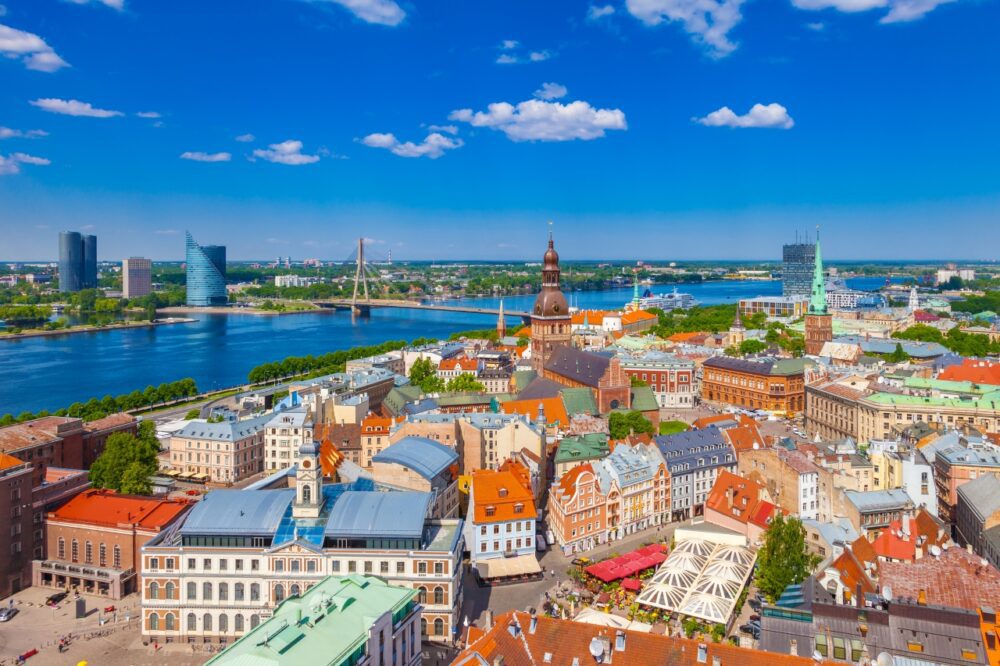
Introduction
Latvia is one of Europe’s hidden gems, a place where natural beauty, rich history, and a vibrant modern culture come together in a way that feels entirely unique. Nestled between Estonia, Lithuania, and the Baltic Sea, Latvia offers an incredible mix of medieval towns, pristine forests, and long stretches of sandy beaches. Whether you’re exploring the winding streets of Riga, hiking through the lush green landscapes of Gauja National Park, or relaxing in the coastal town of Jurmala, Latvia feels both peaceful and full of discovery.
When I first visited Latvia, I wasn’t sure what to expect, but it quickly became one of my favourite countries in the Baltics. The cities are small but lively, the countryside is stunningly unspoiled, and the people are friendly and welcoming. Latvia might not be the first place that comes to mind when planning a European getaway, but it’s a country that will surprise and delight you at every turn. Here’s why you should add Latvia to your travel list.
Table of Contents
Reasons You Should Visit Latvia
1. Rich History and Culture
Latvia’s history is long and complex, with influences from Germans, Swedes, Russians, and Poles all shaping its past. As you wander through the old towns of places like Riga and Cesis, you’ll feel like you’ve stepped back in time. Riga’s Old Town is a UNESCO World Heritage site, and its stunning Art Nouveau architecture is some of the best in Europe. I spent hours wandering through the cobbled streets, admiring the intricate details on the buildings and learning about Latvia’s history at the Museum of the Occupation of Latvia.
But Latvia isn’t just about the past. It has a thriving contemporary culture as well. The capital, Riga, is a hub for the arts, with a fantastic theatre and music scene. The Latvian National Opera is a must-visit if you’re in town, and in summer, the streets are filled with festivals, live performances, and art installations. Latvia’s blend of old and new makes it an exciting place to explore.
2. Beautiful Natural Landscapes
If you’re a nature lover, Latvia is an ideal destination. More than half of the country is covered in forests, and there are endless opportunities for outdoor activities like hiking, cycling, and birdwatching. One of my favourite experiences was exploring Gauja National Park, often referred to as the “Switzerland of Latvia.” The park is full of hiking trails, medieval castles, and picturesque rivers, making it a perfect day trip from Riga.
Latvia’s coastline is equally impressive. The Baltic Sea stretches along the western side of the country, with long sandy beaches and peaceful seaside towns like Jurmala. I visited in the summer and was surprised by how quiet and relaxing the beaches were—perfect for a long walk along the shore or a dip in the (admittedly chilly) water.
3. Charming Medieval Towns
Latvia is home to some of the most charming medieval towns in Europe. Cesis, with its ancient castle and well-preserved Old Town, feels like something out of a fairy tale. Walking through the narrow streets, I could almost imagine knights and merchants from centuries past going about their business. The Cesis Castle, dating back to the 13th century, is a highlight, and climbing its tower offers panoramic views of the surrounding countryside.
Kuldiga is another must-visit town, famous for its charming wooden houses and the widest waterfall in Europe, Ventas Rumba. It’s a quiet, romantic town that feels completely untouched by modernity, perfect for a weekend getaway. Whether you’re exploring castles, walking along medieval walls, or simply soaking in the atmosphere, Latvia’s small towns are a delight.
4. Affordable and Off the Beaten Path
One of the best things about Latvia is that it remains relatively undiscovered by mass tourism, meaning you can explore at your own pace without the crowds. While cities like Riga are becoming more popular, you can still find plenty of hidden gems, particularly in the countryside. The lack of big crowds makes travelling in Latvia a relaxing experience—you can take your time exploring, chatting with locals, and really immersing yourself in the culture.
Latvia is also incredibly affordable compared to many other European destinations. From accommodation to food, prices are reasonable, making it an ideal destination for budget travellers. I was pleasantly surprised by how affordable a nice meal in a restaurant could be. Even in Riga, you can find a great meal and a glass of local Latvian beer without breaking the bank.
5. Welcoming People and Unique Traditions
Latvians are known for their quiet but warm hospitality. While they might not be as outwardly expressive as some cultures, once you start talking to people, you’ll find them incredibly friendly and eager to share stories about their country. One of the highlights of my trip was spending time with locals at a traditional Līgo celebration, a summer solstice festival where people gather around bonfires, sing folk songs, and enjoy traditional Latvian food and drink. It was a wonderful way to experience the country’s unique traditions and connect with its people.
Latvia has a rich cultural heritage, particularly when it comes to folklore, music, and dance. The Latvian Song and Dance Festival, held every five years, is one of the biggest cultural events in the country, drawing thousands of performers and visitors. Even if you’re not visiting during the festival, you can experience Latvia’s traditions through its craft markets, folk museums, and local festivals.
Best Places to Visit in Latvia
1. Riga

Latvia’s capital, Riga, is a vibrant, cosmopolitan city with a rich history and a dynamic arts scene. The city’s Old Town is a UNESCO World Heritage site, filled with medieval architecture, narrow streets, and grand squares. I loved wandering through Dome Square, where the Riga Cathedral dominates the skyline, and stopping for coffee in one of the many charming cafés.
One of the highlights of Riga is its incredible Art Nouveau architecture. The Alberta Iela street is a must-visit, with its ornate buildings and intricate facades. For history lovers, the Museum of the Occupation of Latvia provides a sobering but fascinating look at the country’s 20th-century history under Soviet and Nazi rule. After a day of sightseeing, head to Kalku Varti for a taste of traditional Latvian cuisine.
2. Jurmala
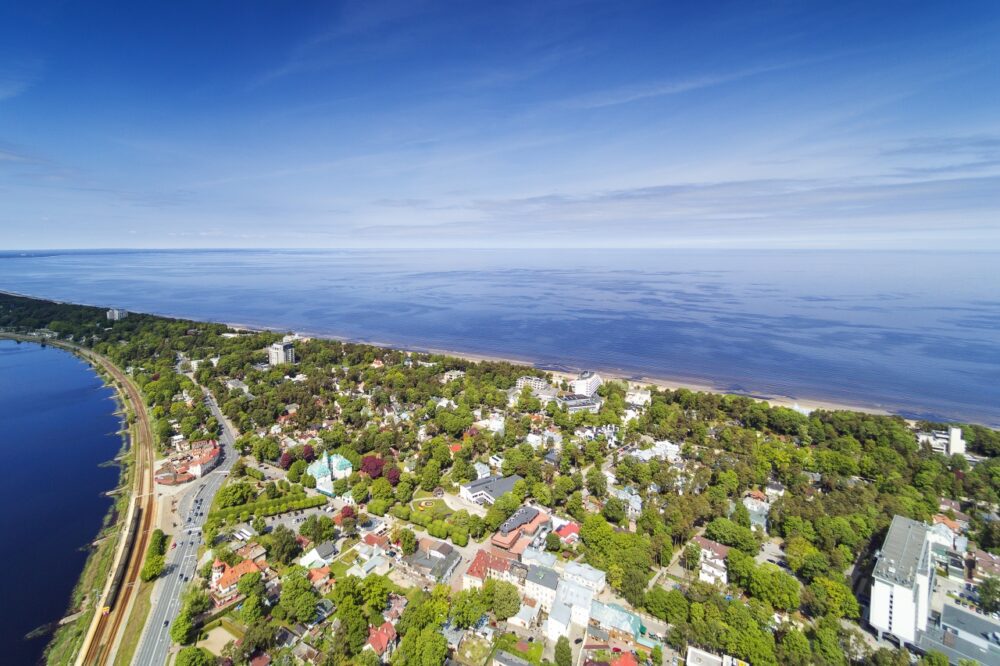
Just a short train ride from Riga, Jurmala is Latvia’s premier seaside resort. With its long, sandy beaches and pine forests, it’s the perfect place to relax and enjoy the beauty of the Baltic coast. I spent a sunny afternoon walking along the beach and taking in the fresh sea air. The town is famous for its wooden architecture, and you can find beautiful old villas scattered throughout.
Jurmala is also home to several spas and wellness centres, making it a popular spot for a bit of pampering. I treated myself to a day at one of the local spas, where I soaked in mineral-rich pools and enjoyed a traditional Latvian sauna experience. Whether you’re looking to relax by the sea or indulge in some self-care, Jurmala is an ideal escape from the city.
3. Sigulda
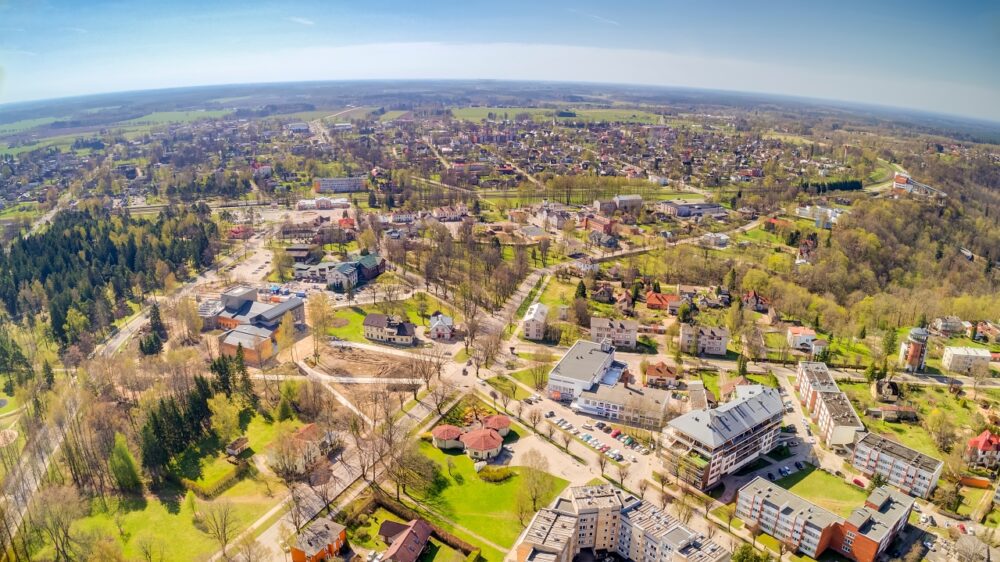
Sigulda is often called the gateway to Gauja National Park, and it’s one of the best places to experience Latvia’s natural beauty. The town itself is small but charming, with its medieval castle ruins and scenic views over the Gauja River Valley. One of the highlights of my visit was taking the cable car across the valley, where you get panoramic views of the forests, rivers, and castles below.
Sigulda is also home to some great outdoor activities. I spent a day hiking through the park, where the trails lead to ancient caves, hilltop castles, and peaceful riverbanks. In winter, Sigulda turns into a hub for skiing and snowboarding, making it a year-round destination for adventure lovers.
4. Cesis
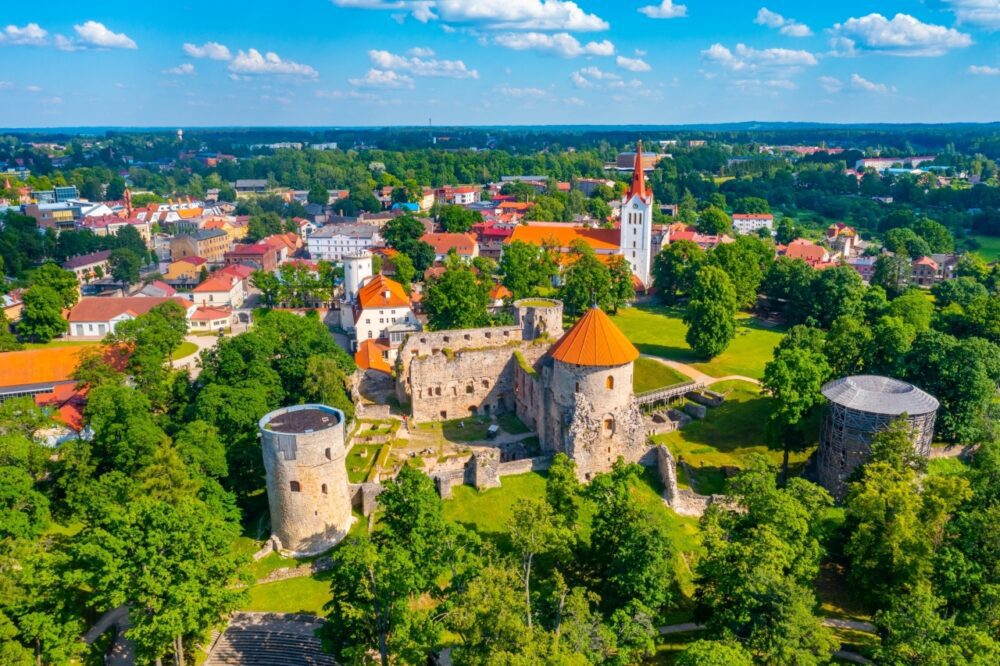
Cesis is one of Latvia’s most picturesque towns, known for its well-preserved medieval centre and beautiful natural surroundings. The town’s main attraction is the Cesis Castle, which dates back to the 13th century. Exploring the castle’s towers and gardens is a step back in time, and the views from the top are worth the climb.
The town itself is perfect for a leisurely day of wandering, with its cobblestone streets, colourful houses, and quiet squares. I spent a peaceful afternoon sipping coffee in a café by the St. John’s Church and browsing local shops selling Latvian crafts. Cesis is also a great base for exploring Gauja National Park, offering easy access to hiking trails and scenic viewpoints.
5. Kuldiga
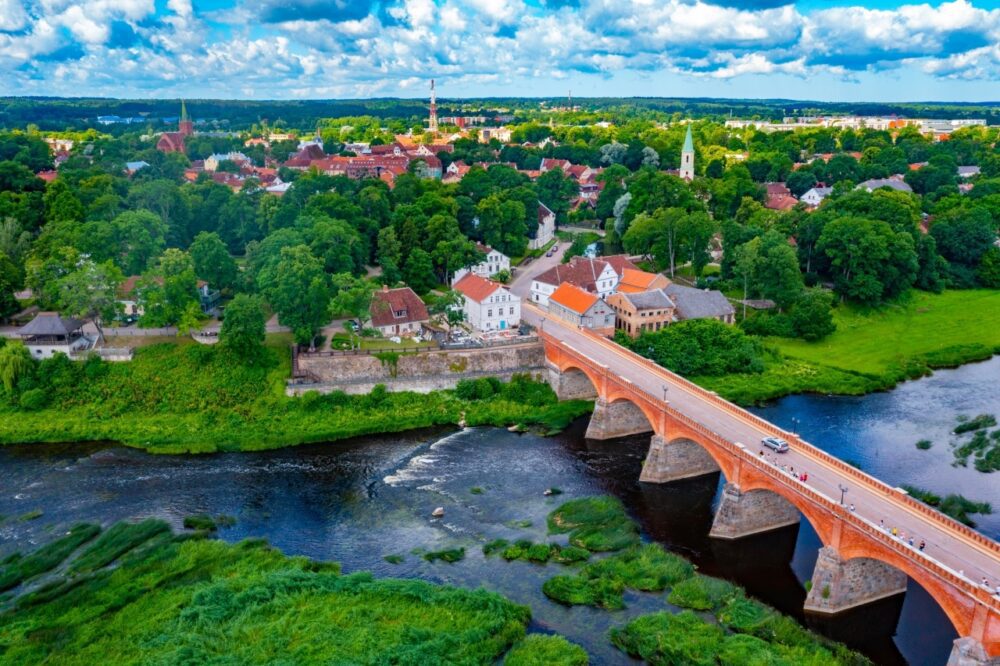
If you’re looking for a quiet, romantic getaway, Kuldiga is the place to go. This small town in western Latvia is famous for Venta Rumba, the widest waterfall in Europe. It’s not the tallest, but it’s certainly one of the most charming, and in summer, locals and visitors alike can be seen swimming and sunbathing by the river.
Kuldiga’s Old Town is full of wooden houses and cobblestone streets, making it feel like a step back in time. I loved walking along the Aleksupite River, which flows through the town, giving it a Venice-like feel. The town also has a relaxed atmosphere, making it a perfect spot to unwind and enjoy a slower pace of life.
6. Liepaja
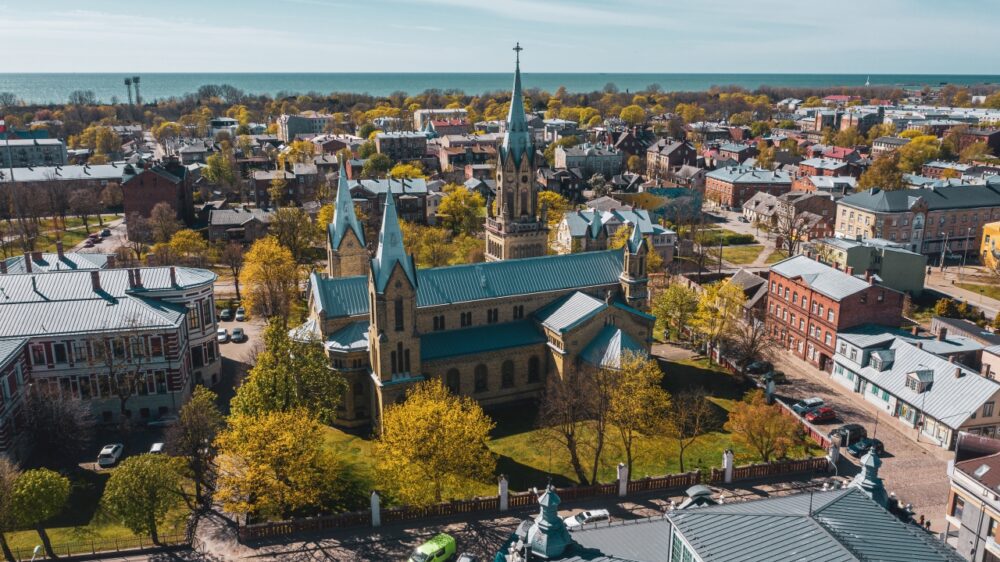
Liepaja, on Latvia’s western coast, is a fascinating mix of old and new. The city is known for its music scene, and it’s even been nicknamed the City of Music. In summer, the Liepaja Beach Festival draws crowds from all over Latvia, with live music, food stalls, and beach parties.
Liepaja is also home to the Karosta district, a former military port that has been transformed into an open-air museum. Exploring the old fortifications and Soviet-era buildings is both eerie and fascinating, offering a glimpse into Latvia’s recent history. After exploring Karosta, I took a long walk along Liepaja’s sandy beach, where the sound of the waves and the fresh sea breeze were the perfect way to end the day.
7. Ventspils

Ventspils is another lovely coastal town, known for its clean streets, colourful buildings, and family-friendly atmosphere. The town has a long maritime history, and the Ventspils Museum is a great place to learn about its seafaring past. One of the highlights for me was visiting Ventspils Castle, a medieval fortress that has been beautifully restored.
The town’s Blue Flag Beach is one of the best in Latvia, and I spent a relaxing afternoon there, swimming and soaking up the sun. Ventspils is also known for its parks and public art, with sculptures and installations scattered throughout the town. It’s a charming place to spend a few days, especially if you’re travelling with family.
8. Daugavpils
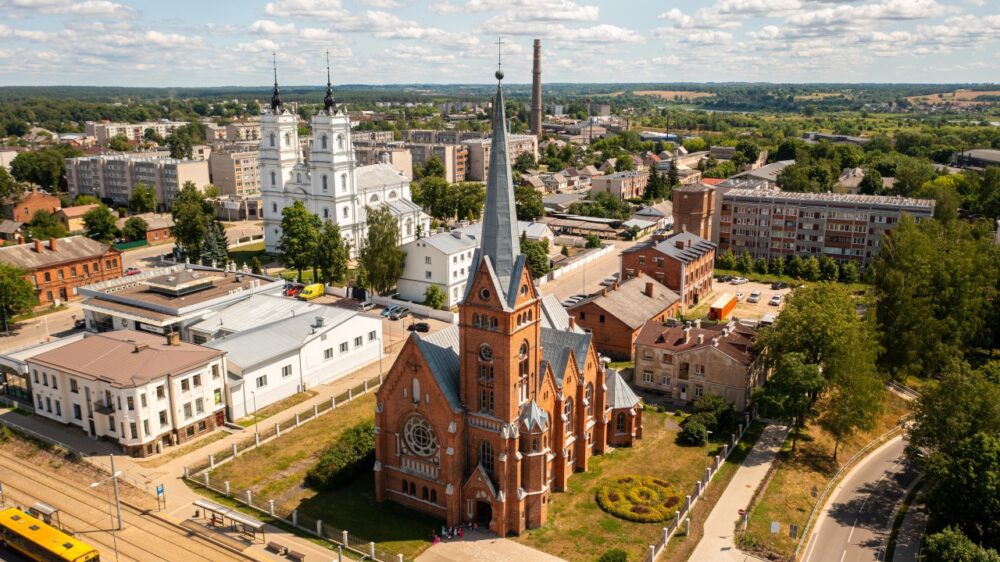
Located in the southeast of Latvia, Daugavpils is the country’s second-largest city and a cultural hub. The city’s main attraction is the Daugavpils Fortress, an enormous 19th-century military complex that has been partially restored. I loved exploring the fortress, which is a unique blend of Russian, German, and Latvian architectural styles.
Daugavpils is also home to the Mark Rothko Art Centre, which is dedicated to the world-famous abstract painter who was born in the city. The centre has a fantastic collection of Rothko’s work, as well as rotating exhibitions from contemporary artists. Daugavpils has a distinct atmosphere, with its mix of cultures and history, making it a fascinating place to visit.
9. Rezekne
Rezekne, in eastern Latvia, is the cultural heart of the Latgale region. The town is known for its strong sense of regional identity, with its own language, traditions, and cuisine. I visited during the Latgale Song Festival, a lively event filled with traditional music, dance, and costumes, and it was a fantastic way to experience the local culture.
One of Rezekne’s key landmarks is the Rezekne Castle Ruins, which sit atop a hill overlooking the town. The views from the top are beautiful, and the castle’s history dates back to the 9th century. Rezekne is also a great base for exploring Lake Razna, one of Latvia’s largest lakes, which is perfect for swimming, boating, and hiking.
10. Jelgava
Just a short drive from Riga, Jelgava is a small town with a rich history. The town’s main attraction is the Jelgava Palace, a stunning baroque building that once served as the residence of the dukes of Courland. I spent a morning exploring the palace and its lovely gardens, learning about the history of this once-powerful duchy.
Jelgava is also known for its annual Ice Sculpture Festival, which takes place in winter. During the festival, the town square is transformed into a magical ice wonderland, with intricate sculptures illuminated by colourful lights. It’s a fun and festive way to experience Latvia’s winter season.
Travel Tips for Latvia
Getting Around Latvia
Latvia’s public transport system is reliable and affordable. Buses are the most popular way to travel between cities like Riga, Liepaja, and Daugavpils, while trains are slower but offer scenic routes, especially along the coast. In Riga, trams, trolleybuses, and buses are the best ways to get around the city. If you’re planning to explore rural areas like Gauja National Park, renting a car is ideal for flexibility, but be prepared for some narrow roads in the countryside.
Best Time to Visit Latvia
The best time to visit Latvia is during summer (June to August) when the weather is warm and perfect for exploring Riga’s Old Town, the beaches of Jurmala, or hiking in Latvia’s national parks. Spring (April to June) and autumn (September to October) offer mild temperatures and fewer crowds, making it ideal for cultural trips and nature activities. Winter (December to February) is cold but magical if you enjoy snow and festive events, like the Riga Christmas Market.
Passport and Visa Requirements for Latvia
Latvia is part of the Schengen Area, so travellers from EU/EEA countries can enter with just an ID card. Visitors from countries like the US, UK, Canada, and Australia can stay visa-free for up to 90 days within the Schengen Zone. Your passport should be valid for at least three months beyond your planned departure. Latvia shares open borders with its Baltic neighbours, so you can easily visit Estonia or Lithuania during your trip.
Currency and Banks in Latvia
Latvia uses the Euro (EUR), and ATMs are widely available, especially in cities. Credit and debit cards are accepted almost everywhere, but it’s always good to have some cash on hand for smaller purchases, especially in rural areas. Currency exchange services are available at airports and in major cities, but ATMs often offer better rates. Tipping is appreciated in restaurants—typically 5-10%—but not mandatory.
Language and Useful Phrases to Know
The official language of Latvia is Latvian, but English is widely spoken in Riga and tourist areas. However, learning a few basic Latvian phrases will be appreciated. Try “Sveiki” (hello), “Paldies” (thank you), and “Lūdzu” (please). Russian is also spoken by many, especially among the older generation, though younger Latvians typically prefer English. Making an effort with Latvian, even if just for greetings, will leave a positive impression.
Budgeting and Costs for Latvia
Latvia is one of the more affordable Baltic countries, especially compared to Western Europe. Accommodation, food, and transport are all reasonably priced, even in Riga. Eating at local cafes or bistros offers excellent value for money, and public transport is cheap. To save on accommodation, consider staying in guesthouses or Airbnbs. Many museums and attractions also offer free entry on certain days or reduced rates for students and seniors.
Conclusion
Latvia is a country that surprises at every turn, with its blend of stunning natural landscapes, rich history, and warm, welcoming culture. From the medieval streets of Riga to the peaceful forests of Gauja National Park, Latvia offers an incredible variety of experiences for every kind of traveller. Whether you’re exploring charming small towns, relaxing on the beach, or diving into the country’s fascinating history, Latvia has something to offer everyone.
What I love most about Latvia is how it manages to feel both undiscovered and accessible. The country has all the charm of a classic European destination but without the overwhelming crowds. It’s a place where you can slow down, enjoy the moment, and connect with both nature and culture. If you’re looking for a destination that offers something truly unique, Latvia should be high on your travel list. Trust me—you’ll leave wanting to come back.
